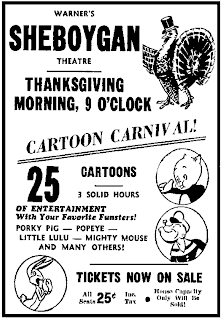George Burns and Gracie Allen were a perfect match. It’s hard to fathom that when Gracie quit show business in the late ‘50s, Burns chose Carol Channing as his partner for his show on the Vegas strip.
Burns, as everyone knows, was ultra low key and personable, churning out a joke pulled from a dusty vaudeville trunk, puffing on his cigar until the audience got it, then rolling on to the next one. No one has ever accused Channing of being ultra low key. She and Ethel Merman strike me as the two stars of Broadway musical comedy who utterly dominated a stage through sheer force of personality, not exactly a trait you’re looking for when doing a two-hander in front of an audience. But Burns knew all the tricks of the show biz trade and was smart enough to ensure he wouldn’t be overpowered in front of the footlights. It helped, too, that Burns had been known by audiences for years; in 1959, Channing was still reasonably new and not yet the huge star she became. “Hello Dolly” was still a few years away, though she was known to audiences from the Broadway hit “Lend an Ear” and through newspaper columns that reported on the Great White Way.
Art loosely imitated life on the George Burns TV show on January 6, 1959. The plot—Burns signed Channing for a nightclub engagement and then joined the act himself. That’s what’s being plugged in this column in the Tucson Citizen from January 3rd. The writer clearly took the angle that his readers had no idea who Carol Channing was; the description would be quite superfluous today. This great caricature accompanied the story.
Her Eyes Are Brown Oceans
By RON KELLY
NEW YORK — Many a lover has used this line:
“Your eyes are like limpid pools of moonlight . . .”
Well, looking into the eyes of Carol Channing isn’t like that at all. It’s more like peering into two huge brown oceans.
That’s not all that's startling about this king-sized pixie. She towers over the average male (5-8 in her nyloned feet).
And the hair . . . well, she calls it “contrived careless.”
Actually, it looks like it was combed none-too-recently by a portable cement mixer. The hair is, presently, blonde.
 If charm were gold, she would make Fort Knox look like a slum. Her fey, good-natured humor is so rapid-fire yet so abrupt that one sits in awe staring vacantly at this wonderful face, hoping not to forget one little pearly gem.
If charm were gold, she would make Fort Knox look like a slum. Her fey, good-natured humor is so rapid-fire yet so abrupt that one sits in awe staring vacantly at this wonderful face, hoping not to forget one little pearly gem.Carol Channing reminds one of a big—very big—friendly sister.
The voice comes through like “Gangbusters” and the laughter—warm and gay, never harsh—is contagious throughout any room. She is a good-humored, story-book character in love with the world. Particularly George Burns.
“Yes, I love that man,” she chirped, “I mean this is not only the funniest man in the world, he is also the kindest.
“Do you know that wonderful man gave me jokes, situations, little stage tricks that I’m still using since I first met him years ago?”
“Did you know he completely staged my night club act for Las Vegas?” she demanded.
Carol loves Gracie, George’s long-time partner now retired, too. And she loves their children, Sandra and Ronnie. “Isn’t Ronnie doing fine on the George Burns Show? And George. That man fractures me.
“Why, he had me in stitches during rehearsals of our TV show. He’s so quick with his jokes, and he has such a tremendous sense of timing. That man has forgotten more jokes than most modern-day comedians will ever remember.
“I am,” she decreed solemnly, “the world’s number one George Burns fan.”
Aside from her enthusiasm for George, the man and the comedian, Carol Channing has other enthusiasms, such as:
Her son, almost six. Her husband, Charles Lowe (advertising man). Her career (she opened a four-week stand at New York’s chic Plaza Hotel on Dec. 26). And people, just plain people.
One gathers that this San Francisco-born charmer has a heart to match her 138 well-distributed pounds. She certainly captivates the attention of those around her—and she enters a room like a steamroller with a bass whistle.
Carol Channing is quite possibly one of the funniest women in the world.
She's the kind of person you’d like to have living next door—if for no other reason than she’d not only loan you a cup of sugar, but she'd give you a million dollars worth of floor show at the same time.
Two recommendations: enjoy the talents of Carol Channing on The George Burns Show next Tuesday. And if ever the occasion arises to meet the girl in person, do so. It’s an experience you’re not likely to forget.
Carol turns 91 today. It’s a happy coincidence she shares a birthday with another over-the-top personality of the stage, Tallulah Bankhead, who was flamboyant in a far different manner.
















































